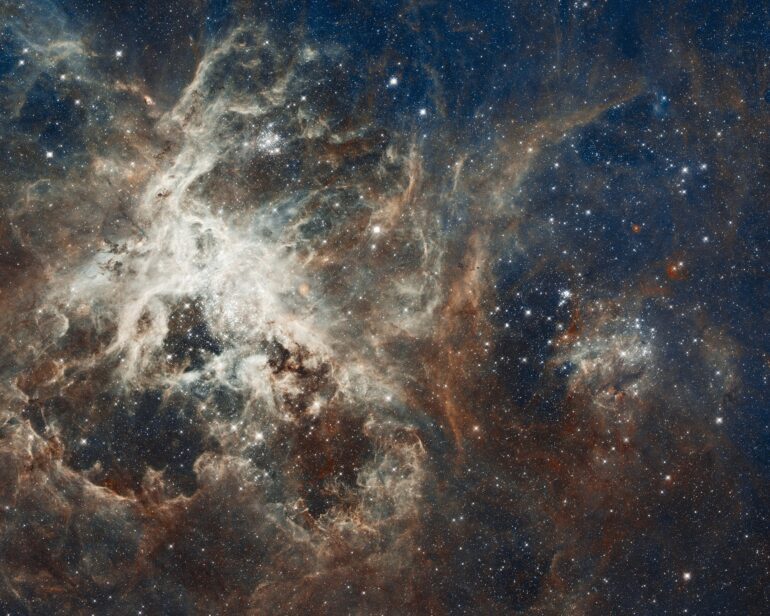TL;DR:
- Researchers from the University of Oxford achieved a groundbreaking feat by training a machine learning model on a satellite in outer space.
- The model, RaVAEn, detects cloud cover changes from aerial images directly on the satellite using few-shot learning.
- Testing showed the model can detect clouds in just one-tenth of a second, covering a vast area of approximately 4.8×4.8 km².
- The technology opens doors for real-time monitoring and decision-making for various applications, from weather prediction to deforestation monitoring.
- Future plans include developing advanced models for differentiating between various changes, like floods, fires, deforestation, and natural shifts in leaf color.
- Machine learning on satellites may also solve satellite sensor calibration issues and enhance reliability in non-homogeneous satellite constellations.
Main AI News:
The University of Oxford’s groundbreaking achievement in training a machine learning model aboard a satellite is poised to revolutionize space data gathering. Spearheaded by DPhil student Vít Růžička from the esteemed Department of Computer Science, this remarkable project opens new doors for remote-sensing satellites, offering real-time monitoring and swift decision-making capabilities.
Traditionally, remote-sensing satellites have been limited to gathering data and transmitting it to Earth for processing, leading to significant delays in responding to events like natural disasters. However, Vít Růžička’s team boldly tackled this challenge by training a machine learning program directly in outer space. Their visionary idea found its way onto the esteemed Dashing through the Stars mission, where the program’s code was successfully uploaded to the ION SCV004 satellite.
The team’s primary focus was on training a highly efficient model for cloud cover detection using aerial images right on the satellite. Adopting the innovative few-shot learning technique, the model learned vital features from only a few training samples, resulting in a compressed data representation that greatly expedited its performance.
Their groundbreaking model, RaVAEn, ingeniously compresses large image files into 128-number vectors and, during training, selectively retains only informative values relevant to the change it seeks to detect, such as cloud presence or absence. The result is an incredibly swift training process due to the model’s lean classification.
Remarkably, the second part of the model, responsible for cloud detection, was trained directly on the satellite, achieving completion of the training phase in a mere one and a half seconds using over 1,300 images.
Upon testing, the model autonomously detected cloud presence in just one-tenth of a second, covering an impressive area equivalent to approximately 4.8×4.8 km² or nearly 450 football pitches.
The team is optimistic about the model’s versatility, envisioning its potential for adaptation to diverse tasks and datasets. Vít Růžička sees the future development of more advanced models that can differentiate between crucial changes, such as flooding, fires, deforestation, and natural changes like seasonal shifts in leaf color. Moreover, they plan to explore complex data, including images from hyperspectral satellites, with the potential to detect methane leaks, which is critical for combating climate change.
Beyond its application in space, machine learning on satellites may hold the key to resolving satellite sensor calibration issues caused by harsh environmental conditions. By recalibrating sensors that degrade over time or encounter rapid changes in the environment, this proposed system can significantly enhance the reliability of non-homogeneous satellite constellations.
Conclusion:
The successful implementation of machine learning directly on satellites marks a pivotal advancement in space exploration and Earth monitoring. This technology promises real-time data analysis and decision-making capabilities, creating significant opportunities in various markets. Industries relying on remote-sensing satellites, such as weather forecasting, environmental monitoring, and disaster response, can benefit from faster and more efficient data gathering and analysis. Additionally, the potential for advanced models to address specific challenges, like detecting methane leaks to combat climate change, offers exciting possibilities for satellite-based solutions in an ever-evolving market. As we venture into this new era of spaceborne machine learning, businesses and organizations should be prepared to leverage these capabilities for enhanced operational efficiency and a greater positive impact on society and the environment.

